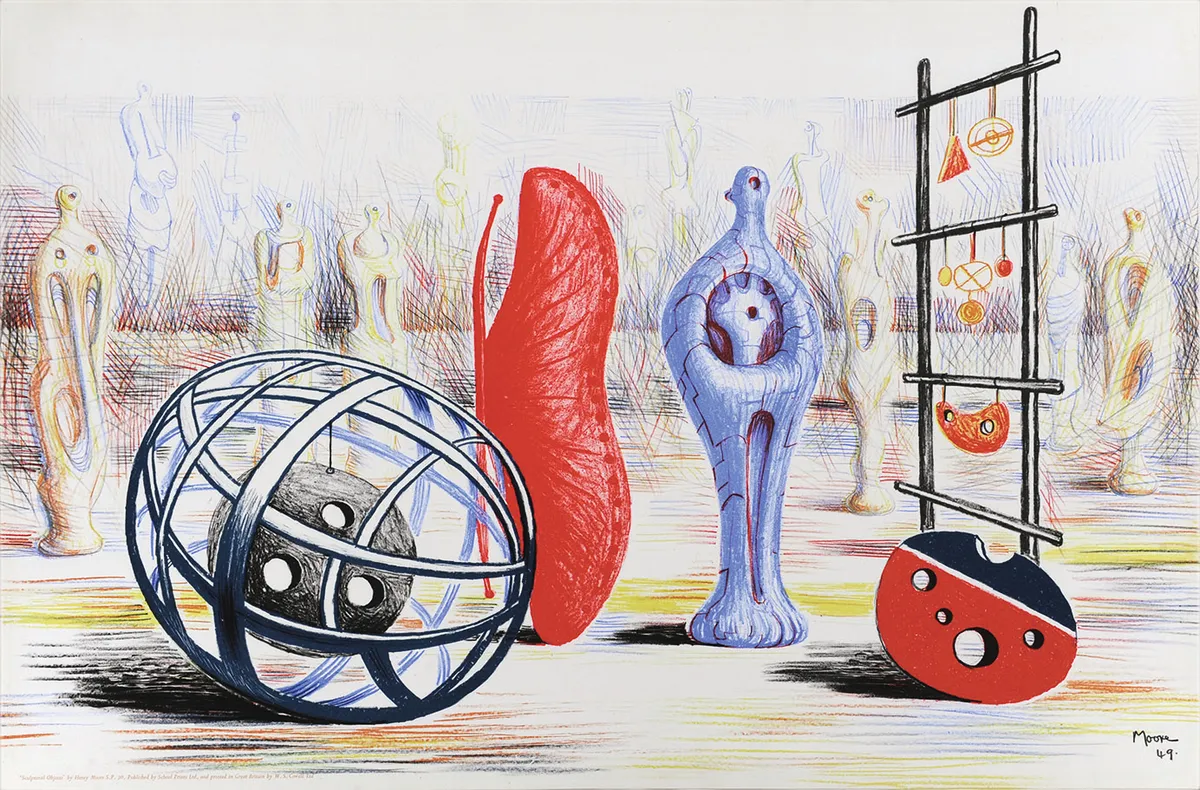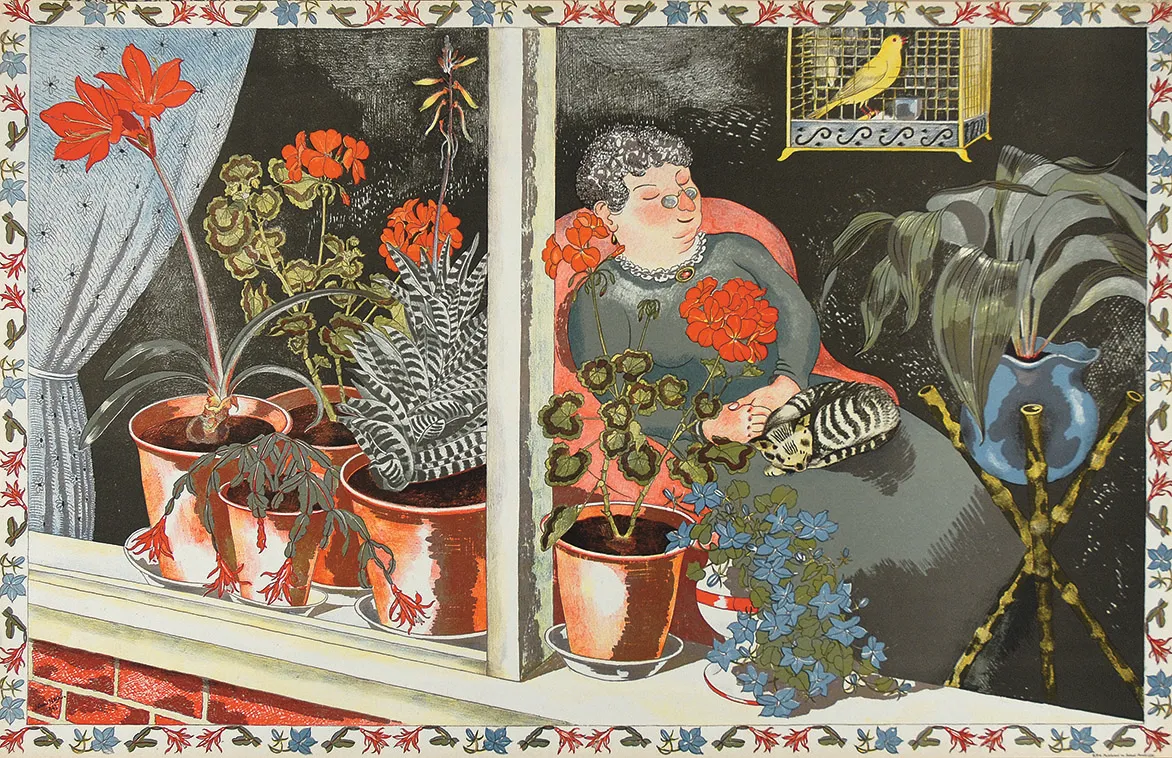About 20 years ago, I discovered an original – and affordable – Henry Moore lithograph in a small art gallery in Sussex. It’s called Sculptural Objects, and today it hangs in our kitchen. The lithograph is ‘signed in the plate’, which means Moore’s signature is included in the printed composition as a whole, rather than individually signed in pencil at a later date. Moore created the work for the School Prints series in 1949, an outstanding project with the noble aim of bringing modern art to the classroom.

In 1935, Derek Rawnsley founded a company specialising in the hire of reproduction artwork for schools, which children from varying backgrounds could have access to. After Derek’s death in 1943, his wife Brenda took over the running of the company.
Brenda was a remarkable and determined woman. Taking advice from the distinguished art historian and critic Herbert Read, she decided to commission a series of affordable modern lithographs to sell (by subscription) to primary schools, with the intention of ‘giving children an understanding of contemporary art’. For reasons of economy, she restricted the artists to no more than six colours.
Find out what the difference between vintage and antique is here.
You might also like decorating with vintage school charts
The lithographs were drawn directly onto stone or zinc plates and were then printed by Thomas Griffits at the Baynard Press – one of the most technologically advanced British printing companies at that time. Each print had a decorative border to act as a frame when pinned to the wall.
Brenda formed an advisory committee and, eventually, for the first series, they selected 24 works from leading British artists. These included: Clarke Hutton, Barbara Jones, L. S. Lowry, John Nash, Michael Rothenstein, John Skeaping, Feliks Topolski, Julian Trevelyan and John Tunnard. In 1949, Brenda approached a handful of Europe’s most distinguished artists and persuaded Braque, Matisse, Léger, Dufy, Picasso and Moore to sign up to the project.

To print the second ‘European’ series, she used W. S. Cowell of Ipswich, which had developed an innovative new printing technique called Plastocowell. Artists drew directly onto a sheet of transparent plastic, which could then be shipped with relative ease. Sculptural Objects was the first to be printed this way. Unfortunately, the avant-garde European series proved less popular with the educational authorities, leading to the inevitable financial decline of the firm.
Today, the School Prints series is eminently collectable, although some prints are worth considerably more than others. While print-runs are thought to have extended into the several thousands, some prints are hard to find in decent condition, as post-war austerity necessitated the use of thin paper.
You might also like collecting bird prints
Ironically, prints from the European series tend to be the most valuable. Picasso’s Composition can be a challenge to track down, and collectors might expect a dealer’s price in excess of £1,000. Lowry’s striking Punch and Judy might fetch over £2,000 in a gallery.
Moore’s Sculptural Objects sells for £300–£500 at auction, with, again, dealers asking considerably more, but Michael Rothenstein’s Timber Felling in Essex (in my view, one of the strongest in the series) can be secured at auction for a mere £100. John Nash’s charming Window Plants is one of the most popular prints in the series and routinely sells at auction for £200–£300.
